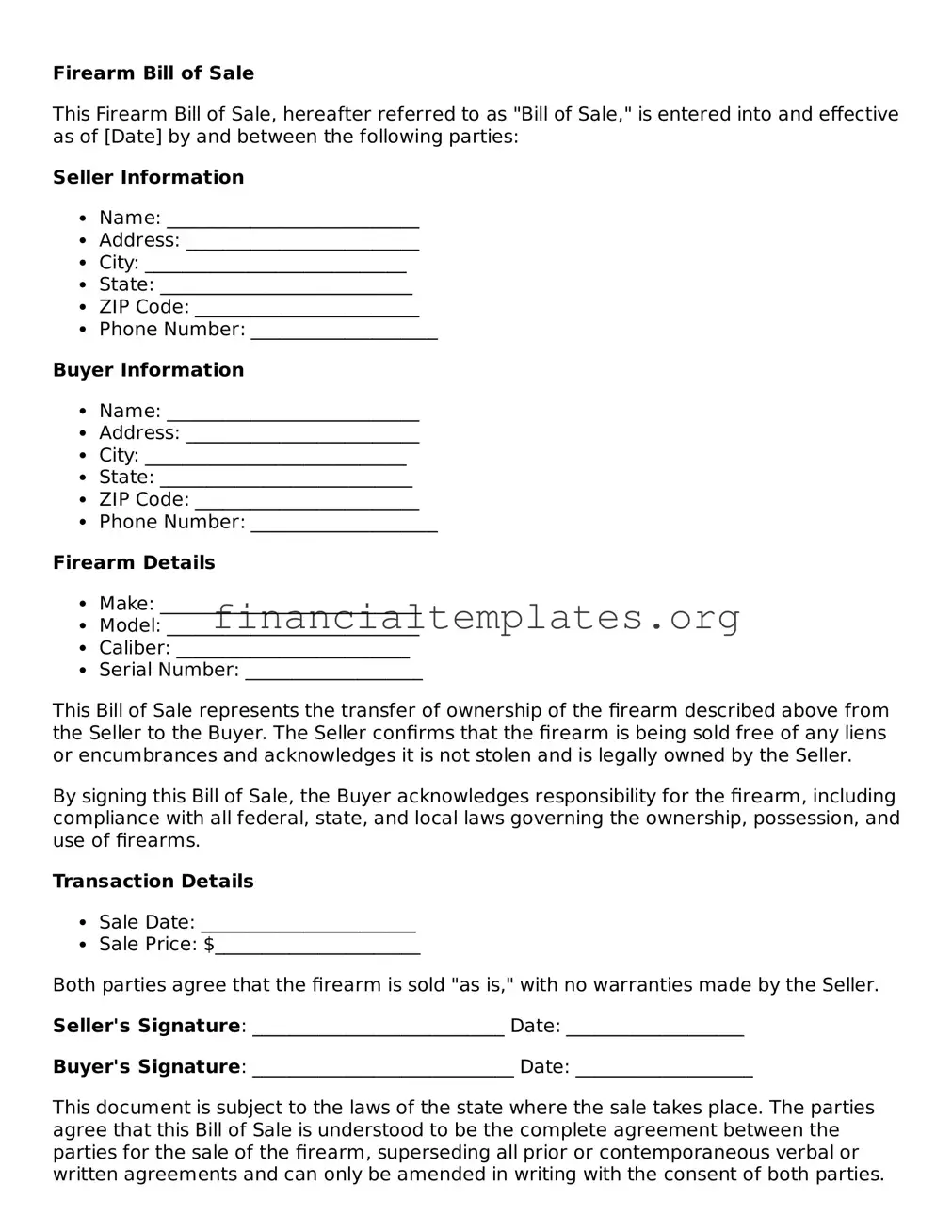Firearm Bill of Sale
This Firearm Bill of Sale, hereafter referred to as "Bill of Sale," is entered into and effective as of [Date] by and between the following parties:
Seller Information
- Name: ___________________________
- Address: _________________________
- City: ____________________________
- State: ___________________________
- ZIP Code: ________________________
- Phone Number: ____________________
Buyer Information
- Name: ___________________________
- Address: _________________________
- City: ____________________________
- State: ___________________________
- ZIP Code: ________________________
- Phone Number: ____________________
Firearm Details
- Make: ____________________________
- Model: ___________________________
- Caliber: _________________________
- Serial Number: ___________________
This Bill of Sale represents the transfer of ownership of the firearm described above from the Seller to the Buyer. The Seller confirms that the firearm is being sold free of any liens or encumbrances and acknowledges it is not stolen and is legally owned by the Seller.
By signing this Bill of Sale, the Buyer acknowledges responsibility for the firearm, including compliance with all federal, state, and local laws governing the ownership, possession, and use of firearms.
Transaction Details
- Sale Date: _______________________
- Sale Price: $______________________
Both parties agree that the firearm is sold "as is," with no warranties made by the Seller.
Seller's Signature: ___________________________ Date: ___________________
Buyer's Signature: ____________________________ Date: ___________________
This document is subject to the laws of the state where the sale takes place. The parties agree that this Bill of Sale is understood to be the complete agreement between the parties for the sale of the firearm, superseding all prior or contemporaneous verbal or written agreements and can only be amended in writing with the consent of both parties.
It is recommended that both parties retain a copy of this Bill of Sale for their records and, where applicable, file a copy with the state's relevant authority.
